50 Most Common Vegetables to Know in Korean

Need some color in your Korean studies? Why not throw in some greens?
And no, you can’t just avoid them like you (and I) may have done as a kid during dinnertime.
After all, knowing your Korean vegetables is essential to a healthy language-learning diet!
In this post, you’ll learn the names of some must-know vegetables in Korean. They’ll be welcome starters or additions to your mental Korean food vocabulary pantry.
We’ve also included the top Korean special ingredients and Korean vegetable dishes, so you’ll be cooking with Korean ingredients in no time.
Download: This blog post is available as a convenient and portable PDF that you can take anywhere. Click here to get a copy. (Download)
Common Vegetable Names in Korean
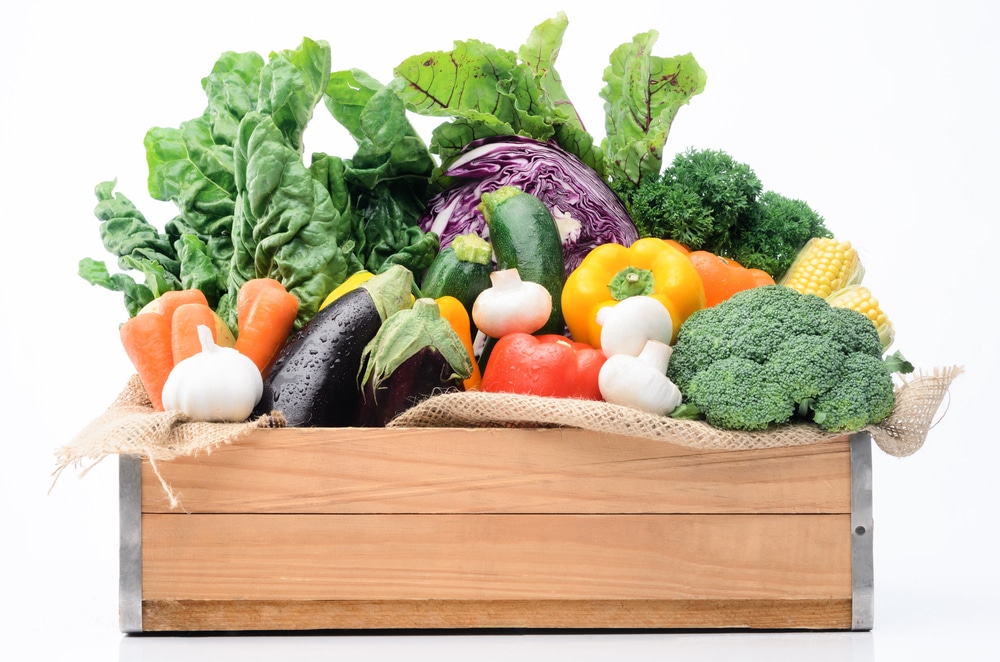
These are the Korean vegetables that you can encounter anywhere. Some of the names are just Korean transliterations of the English names, likely because the vegetable in question wasn’t native to Korea.
아티초크 — Artichoke
아스파라거스 — Asparagus
콩나물 — Bean Sprouts
피망 — Bell Pepper
브로콜리 — Broccoli
양배추 — Cabbage
당근 — Carrot
콜리플라워 — Cauliflower
셀러리 — Celery
옥수수 — Corn
오이 — Cucumber
가지 — Eggplant
부추 — Leek
상추 — Lettuce
양파 — Onion
버섯 — Mushroom
완두콩 — Pea
고추 — Pepper (spicy)
감자 — Potato
호박 — Pumpkin
무 — Radish
시금치 — Spinach
Unique Vegetables and Greens in Korea
Overall, Korean cuisine really loves utilizing its vegetables. And of course, many Korean dishes get their signature taste and appeal due to the special veggies they use. I sometimes even throw in Korean vegetables to non-Korean dishes, just because I think they would benefit from them.
There are several Korean vegetables that can be difficult to find in any place other than a Korean-based grocery store or market. They’re well worth the search, however, because they have tastes that can’t be fully replicated by anything else.
깻잎 — Perilla Leaf
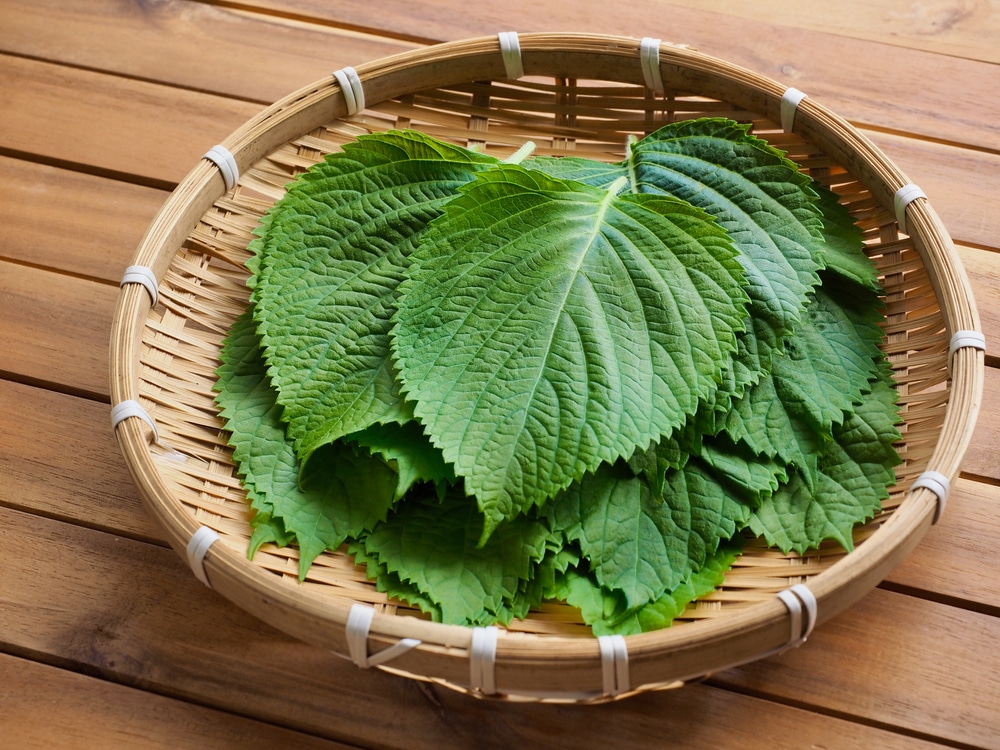
If you ever sit down for a traditional Korean meal, you’re very likely to see on the table a plate of either raw or seasoned perilla. These bitter leaves are often used as wraps to bundle up rice plus other sides into a neat package you eat in one bite. I personally prefer seasoned perilla paired with some fresh Korean grilled meat—the taste is astounding!
청양고추 — Cheongyang Chili Pepper
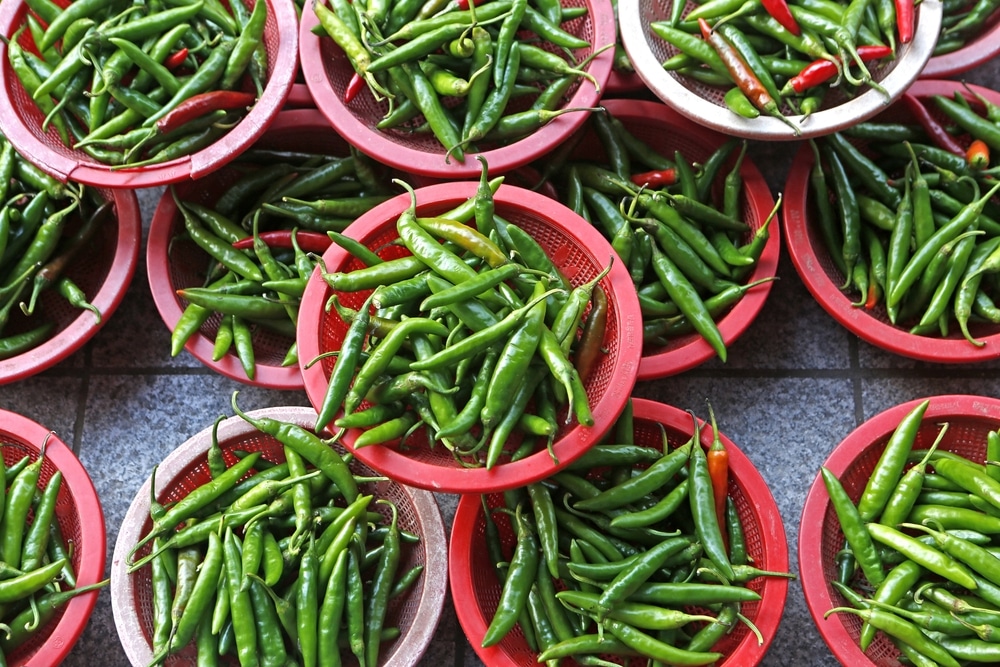
You can never be too sure with these green peppers. With one bite, you may enjoy a sharp but deliciously tolerable level of spiciness…or you may be gulping down water with tears streaming down your eyes (as is usually the case with me, with my pitiful inability to handle spicy foods). It’s a gamble that’s worth braving, because they can provide a fresh kick to any dish.
애호박 — Korean Zucchini
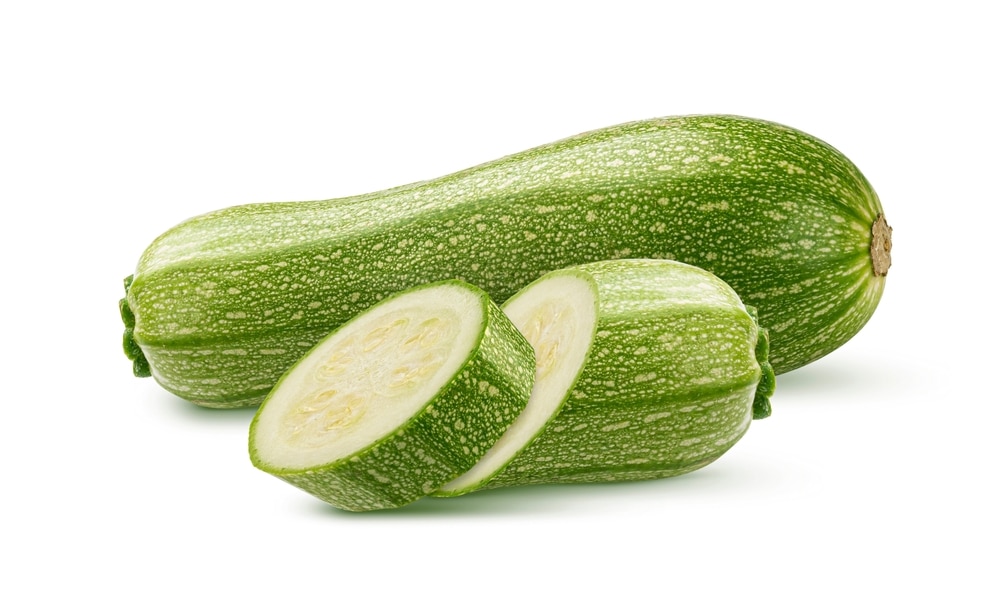
It may look like a run-of-the-mill zucchini, but the Korean 애호박 is a notably different specimen. It has a juicy texture and softer flesh, and its flavor is rather subtle. The 애호박 is typically eaten fried or seasoned. My favorite use of this vegetable is when it’s incorporated into Korean stews known as 찌개 , in which they become wonderfully tender as they soak up the broth.
총각무 — Chonggak Radish
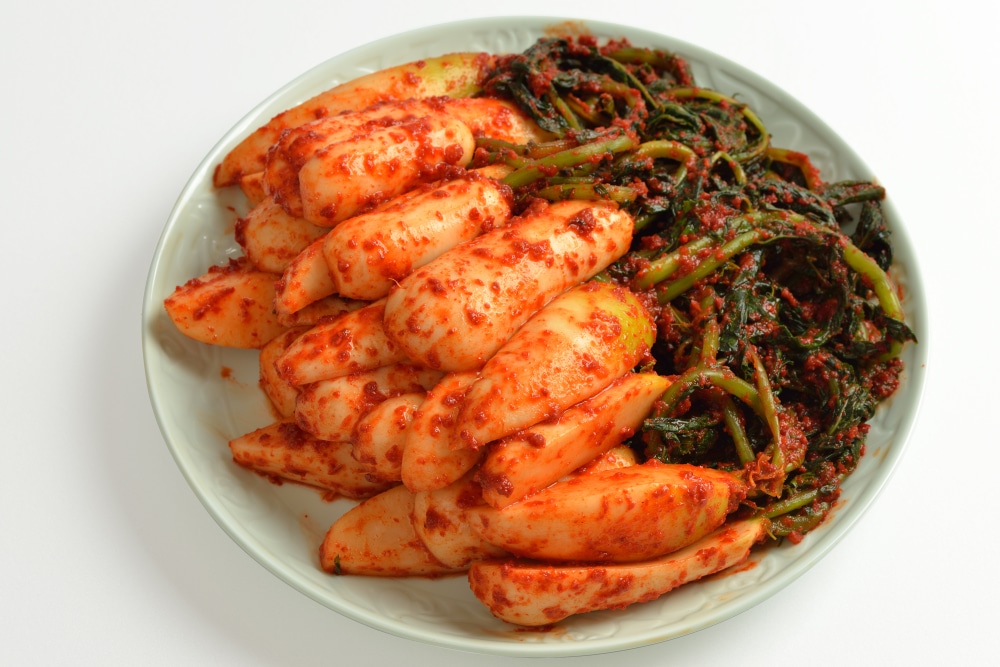
This radish’s name translates to “bachelor radish.” That’s because its shape resembles the long hairstyle of unmarried Korean men in ye olden days. The vegetable is commonly made into kimchi, with its body left mostly intact. If you love the standard lettuce type kimchi, I suggest you try the radish variant as well—it has a delicious, thick crunchiness that just can’t be beat.
고구마 — Sweet Potato
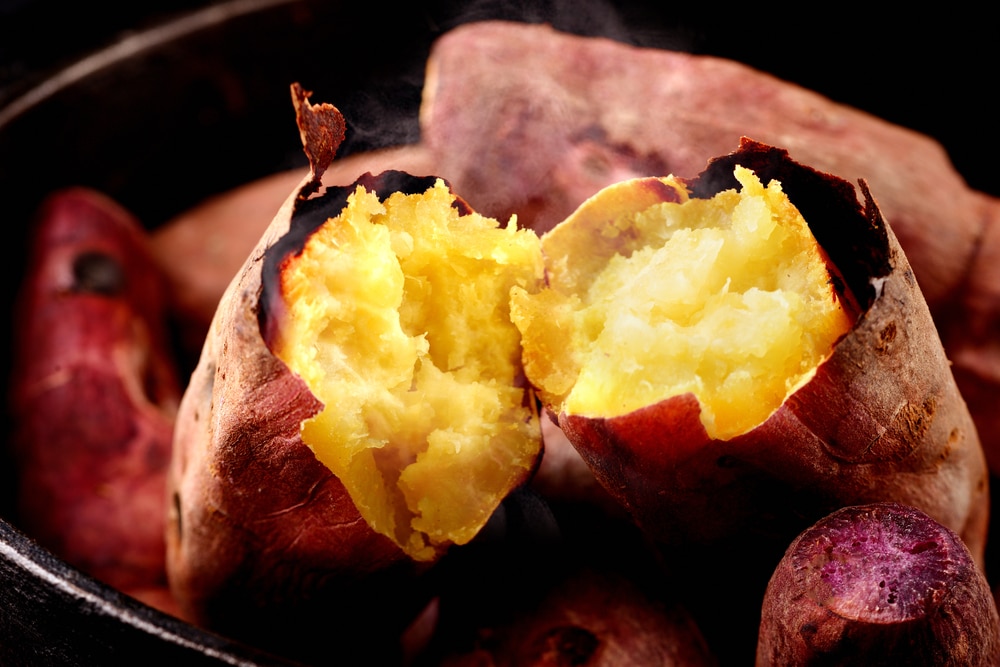
Sweet potatoes have a special place in my heart—Korean ones especially so. Yellow-fleshed and covered in a ruddy skin, Korean sweet potatoes have a more earthy taste than Western yams. They’re often classified into two types: 밤고구마 , which is chestnut-like in taste and drier in texture, and 물고구마 , which is softer and more watery. In Korea, they’re a popular snack that’s often eaten fire-roasted or steamed.
콩나물 — Soybean Sprout
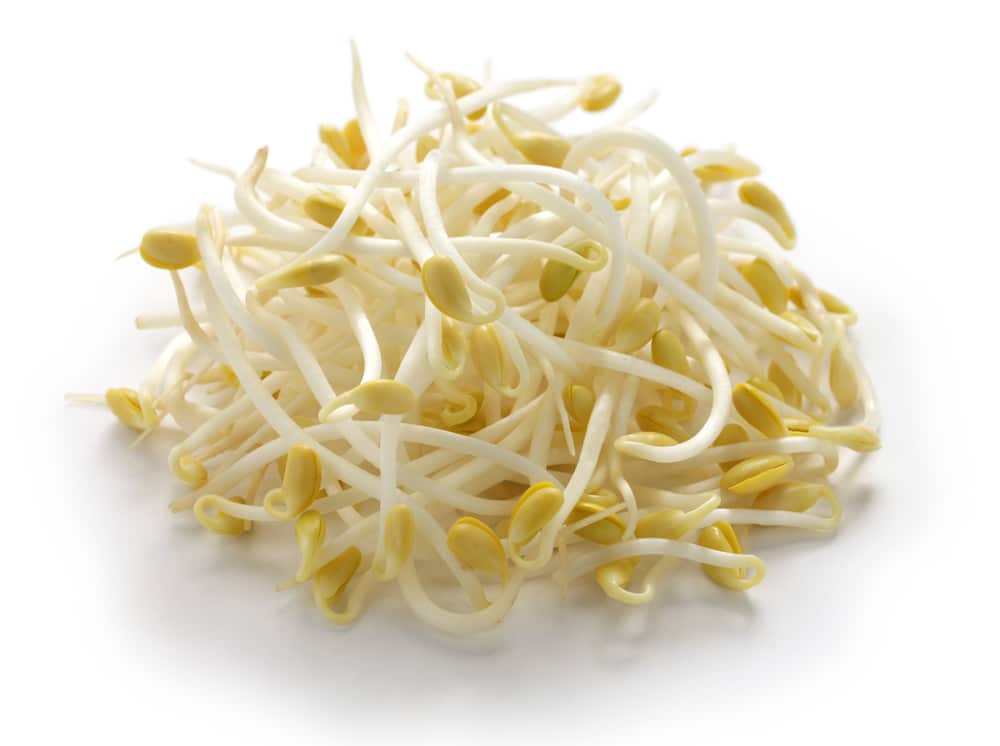
It’s not a joke to say soybean sprouts are used practically all the time in Korean cuisine and are just universally loved by Korean cooks—I literally see them poking out of any meal (Korean-based or not) my mother makes. They can be incorporated into all kinds of dishes, whether vegetarian or not, to provide them with a nutritious crunch. They’re also boiled or seasoned and eaten as a side.
숙주나물 — Mung Bean Sprout
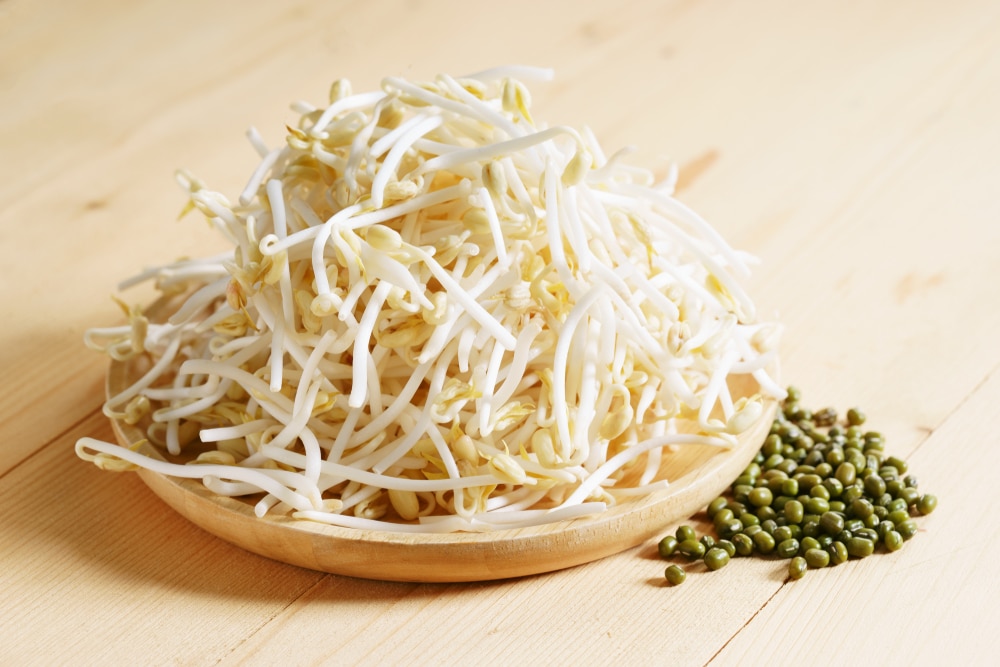
Mung bean sprouts are quite similar to soybean sprouts, though they have smaller yellow heads and are a little shorter overall. They also tend to be more watery. You can find mung bean sprouts used as a topping in many Korean dishes. Mung beans themselves are also used to create a tasty fried pancake known as 빈대떡 .
달래 — Korean Wild Chive
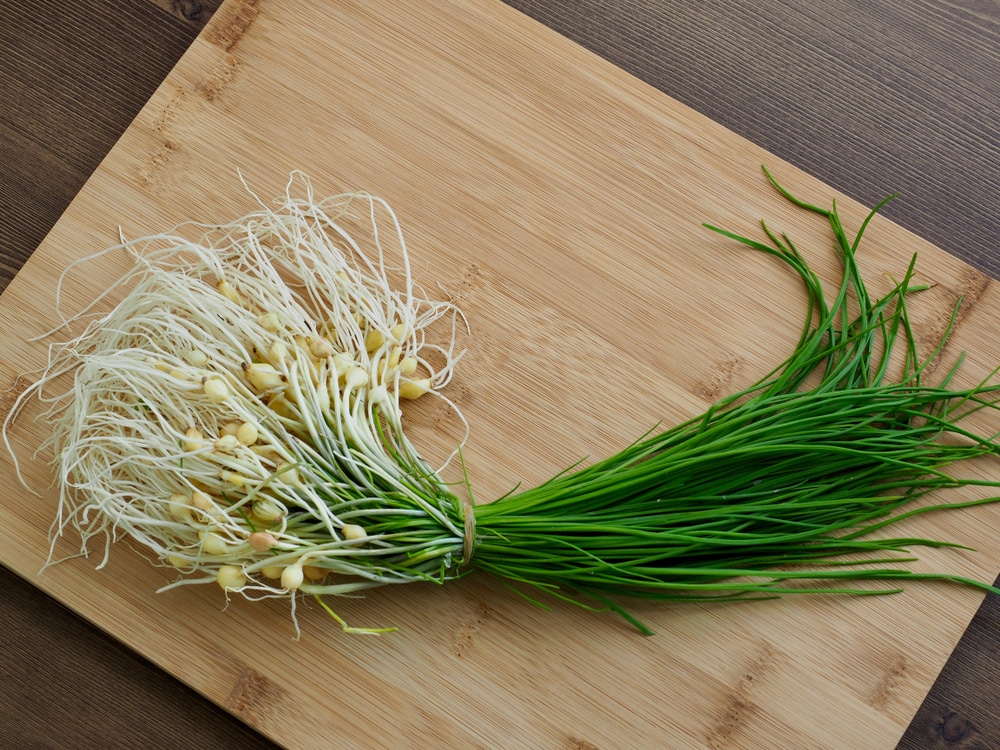
This spring green consists of a long leaf and a small bulb. It may not look like much, but the Korean wild chive has a notable onion-y taste that can be a refreshing addition to whatever you cook. Like many other Korean greens, it can be seasoned and eaten by itself, though I prefer to eat it as a topping for meats or stew.
취나물 — Aster Scaber
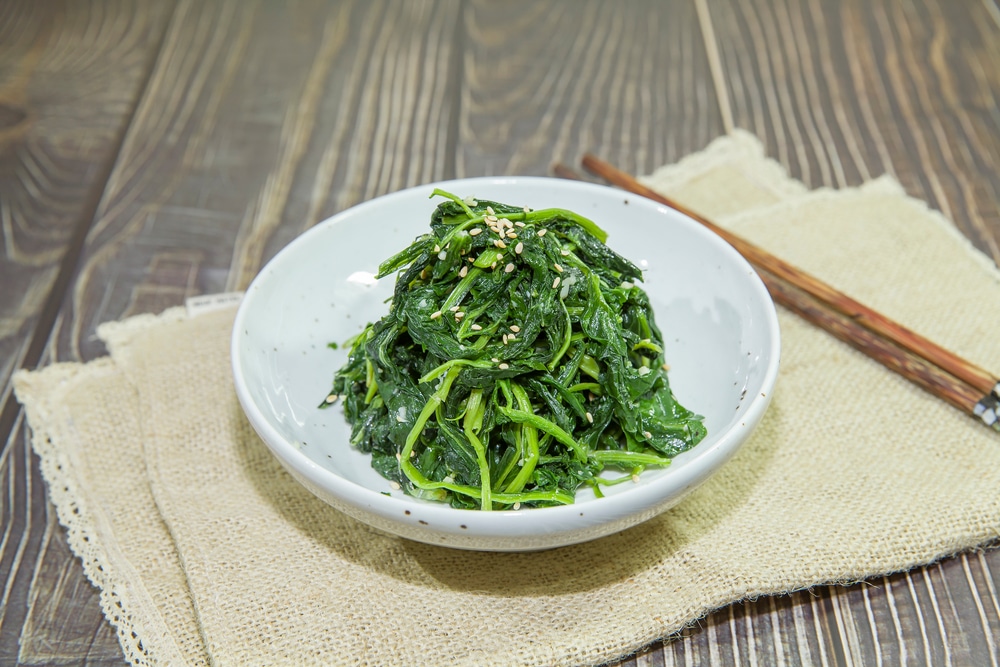
Appreciated for its abundance of vitamins, this bitter herb is often seasoned and eaten as a side or atop rice. Its strong taste makes it pair well with a variety of foods. It can also be dried out and rehydrated for later use, a trait that makes the aster scaber a popular food item during the winter season.
쑥 — Mugwort
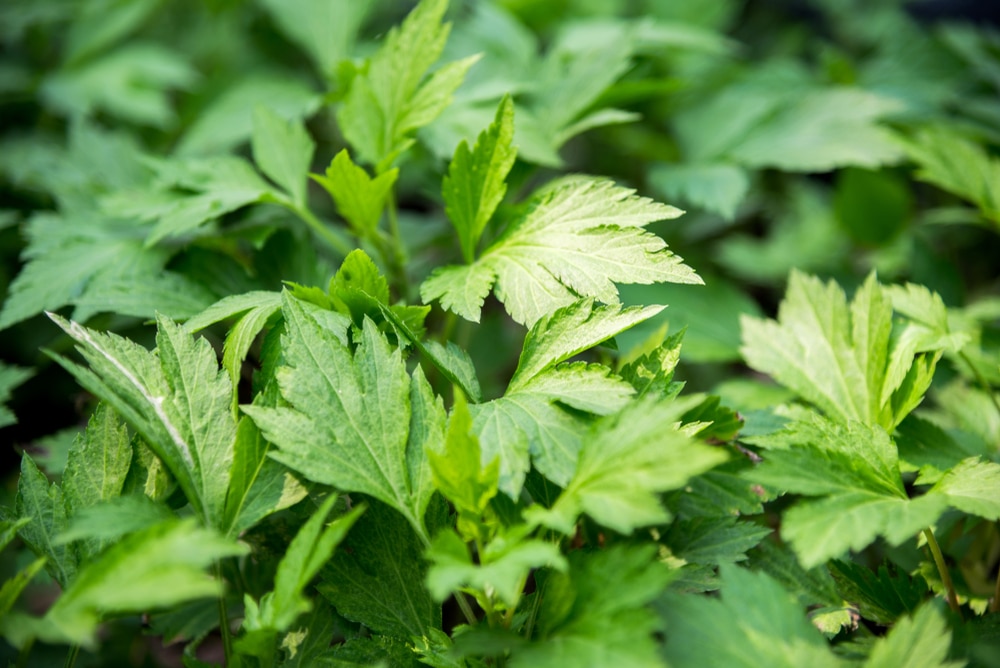
In food, mugwort can be eaten in its original form or in powder form (such as in the case of mugwort-flavored 떡 rice cake, which I highly recommend you try). But the plant isn’t just used for Korean cuisine—it’s also used in some skincare products due to its purported antibacterial and cleansing properties.
If you watch K-dramas or Korean cooking vlogs, you’ll see many of these vegetables pop up! To practice the vocabulary with the added help of language learning tools, you can watch related Korean videos on FluentU.
FluentU takes authentic videos—like music videos, movie trailers, news and inspiring talks—and turns them into personalized language learning lessons.
You can try FluentU for free for 2 weeks. Check out the website or download the iOS app or Android app.
P.S. Click here to take advantage of our current sale! (Expires at the end of this month.)
Unique Korean Vegetable Dishes
김치 — Kimchi

This is perhaps the most famous Korean dish. It’s fermented vegetables, typically napa cabbage or radishes, mixed with garlic, ginger and Korean red pepper flakes. There are many variations of kimchi, and it’s a staple in Korean cuisine.
비빔밥 — Bibimbap
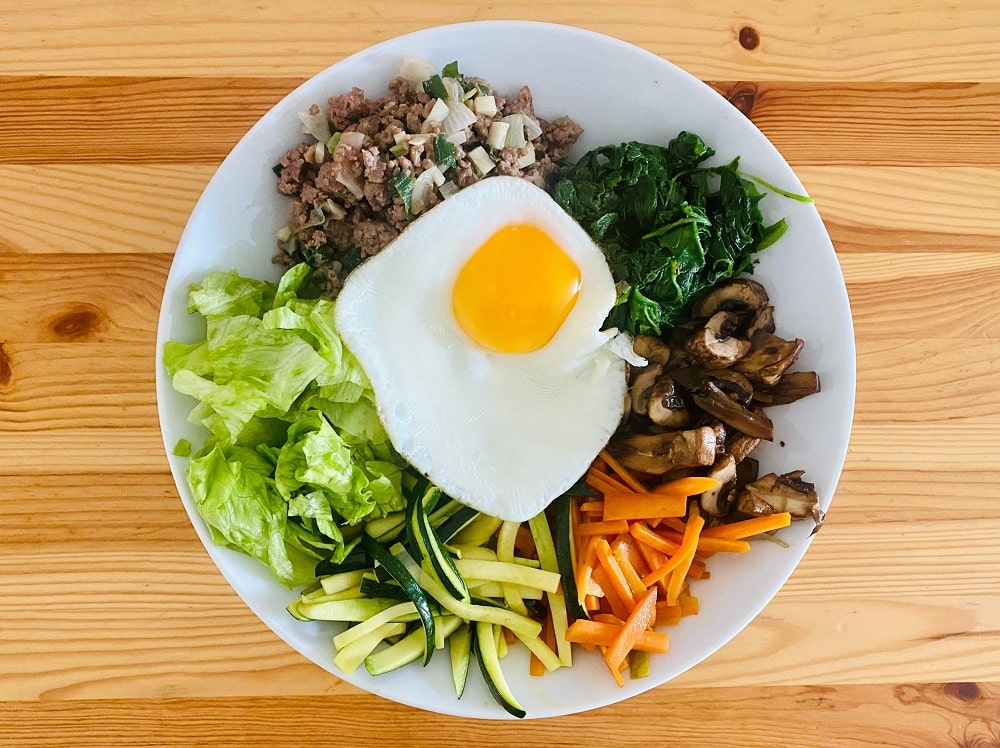
While not strictly a vegetable dish, it features an assortment of sautéed and fresh vegetables like spinach, soybean sprouts, carrots, zucchini and mushrooms. It’s served over a bowl of rice with a spicy sauce. I personally could eat this dish every day.
나물 — Namul

This is a general term for a variety of seasoned and sautéed vegetables. Different types of greens like spinach, fiddlehead ferns and soybean sprouts are commonly used in Korean kitchens.
부추무침 — Buchu Muchim
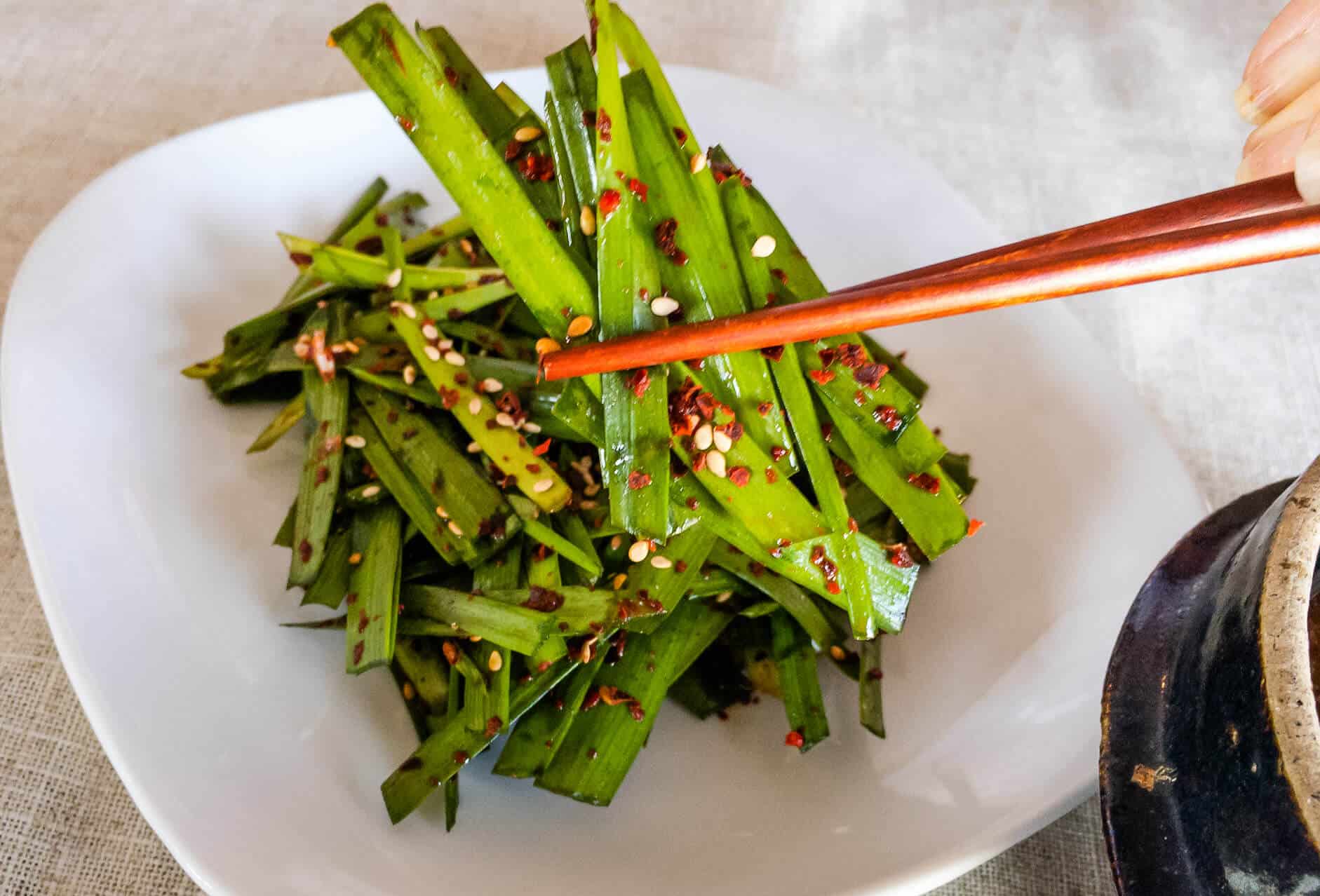
This spicy dish is made from chives, which are seasoned and then sprinkled with sesame seeds. It’s a simple yet flavorful side dish.
오이무침 — Oi Muchim

This is a cucumber salad seasoned with soy sauce, garlic and sesame oil. It’s very refreshing and a great summer side dish. It can be very spicy, depending on who’s making it.
콩나물무침 — Kongnamul Muchim
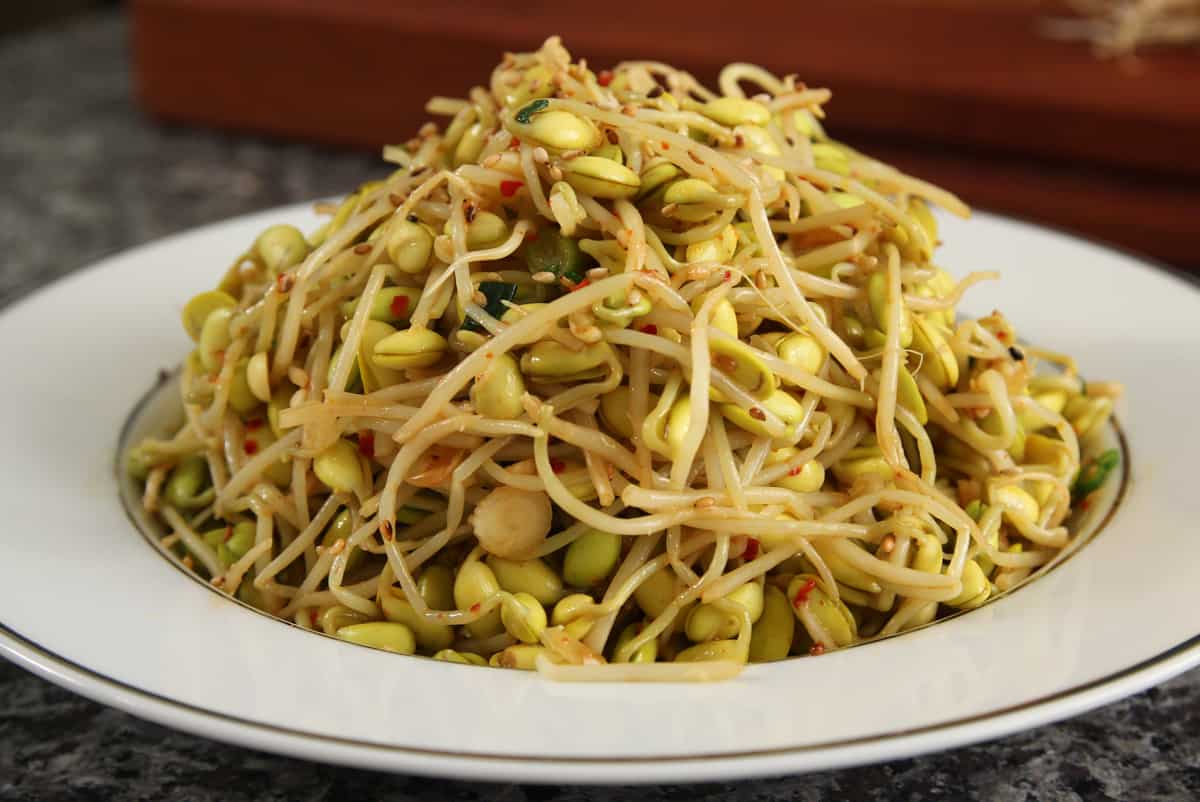
This is a spicy soybean sprout salad seasoned with garlic, green onions and soy sauce. It’s often served cold. Don’t let the beige color throw you off. It’s quite filling, too.
도라지나물 — Doraji Namul
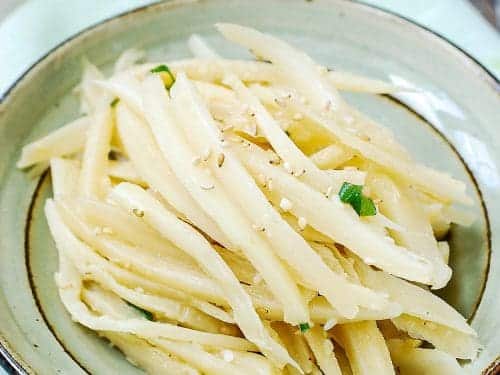
Made from bellflower roots, which are blanched and seasoned, this is a super Korean vegetable dish. It has a crunchy texture and slightly bitter taste.
시금치나물 — Sigeumchi Namul

In this dish, spinach is blanched and seasoned with soy sauce, garlic, and sesame oil. It’s a popular banchan (side dish).
가지나물 — Gaji Namul

This is made from eggplants that are sliced, blanched, and seasoned with soy sauce, garlic and sesame oil. The purple of the eggplant always looks quite elegant to me.
호박볶음 — Hobak Bokkeum
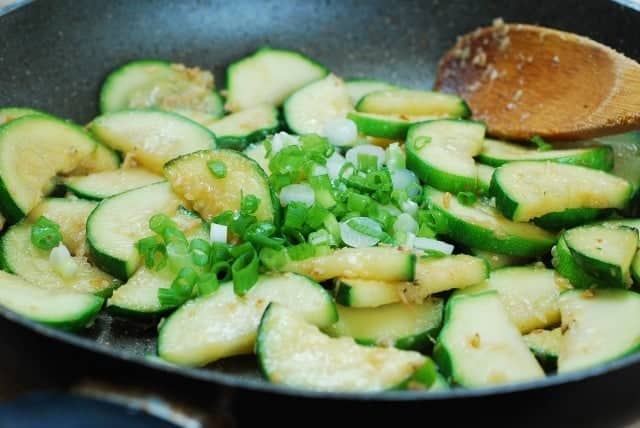
This is a stir-fried zucchini dish, usually seasoned with garlic, soy sauce and sometimes a bit of sugar for a touch of sweetness.
무생채 — Mu Saengchae
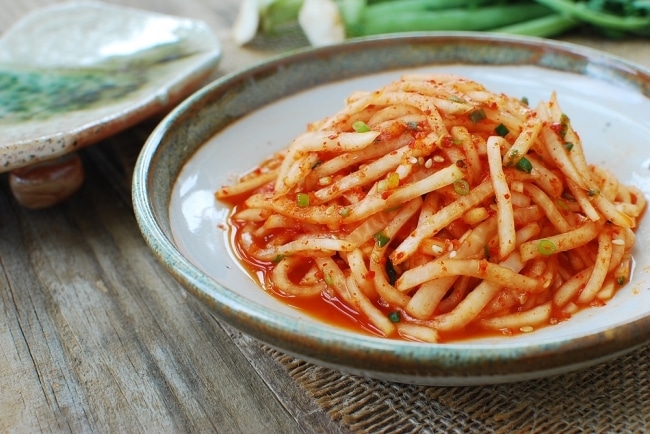
This spicy Korean radish salad is made from julienned radish, seasoned with garlic, green onions, with plenty of Korean red pepper flakes.
고사리나물 — Gosari Namul
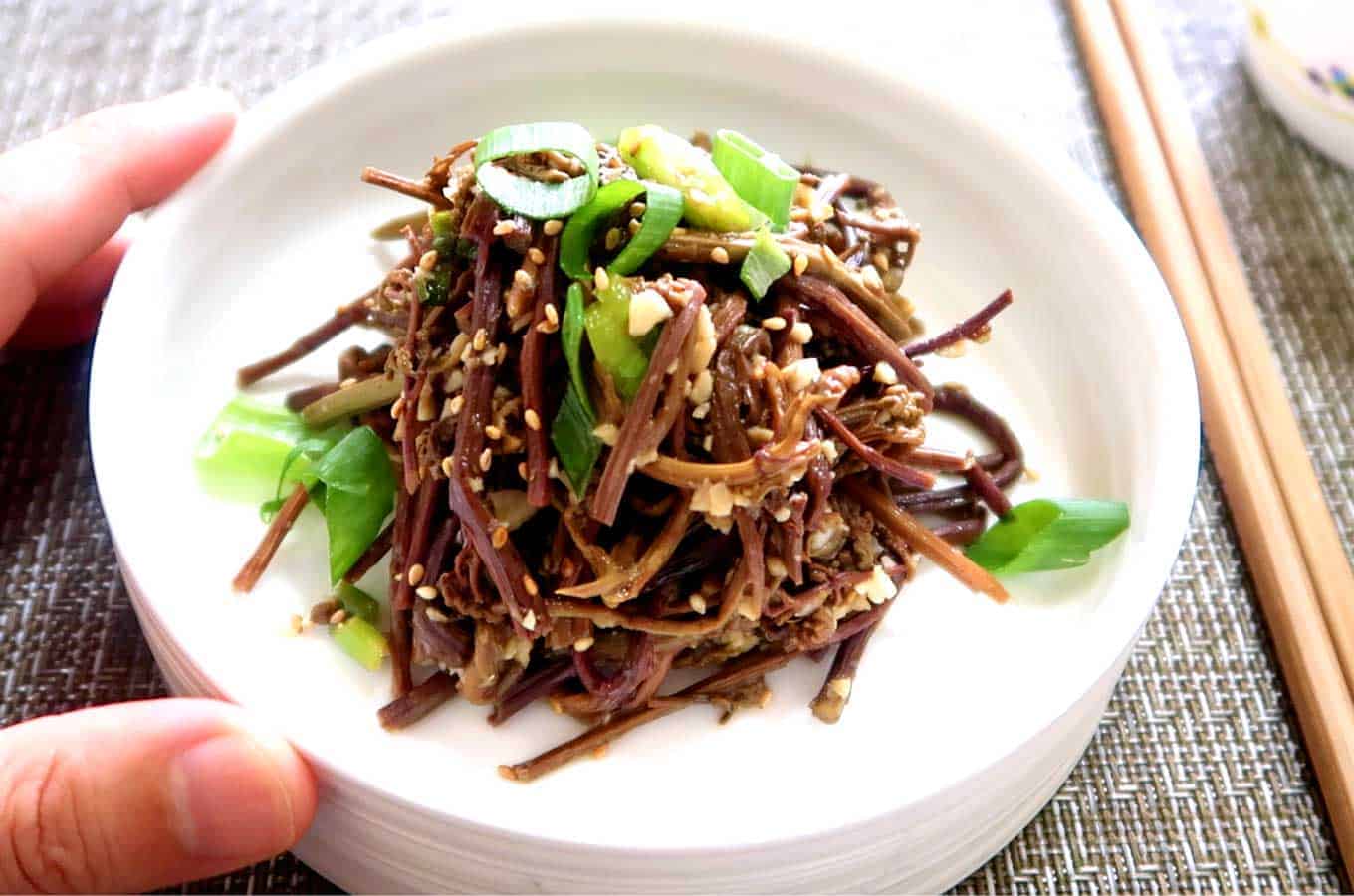
This somewhat strange dish is made from the tops of fiddlehead ferns, which are blanched and seasoned. It has a unique texture and earthy taste. Once you taste the fiddlehead fern, you’ll never not crave it.
청경채나물 — Bok Choy Namul
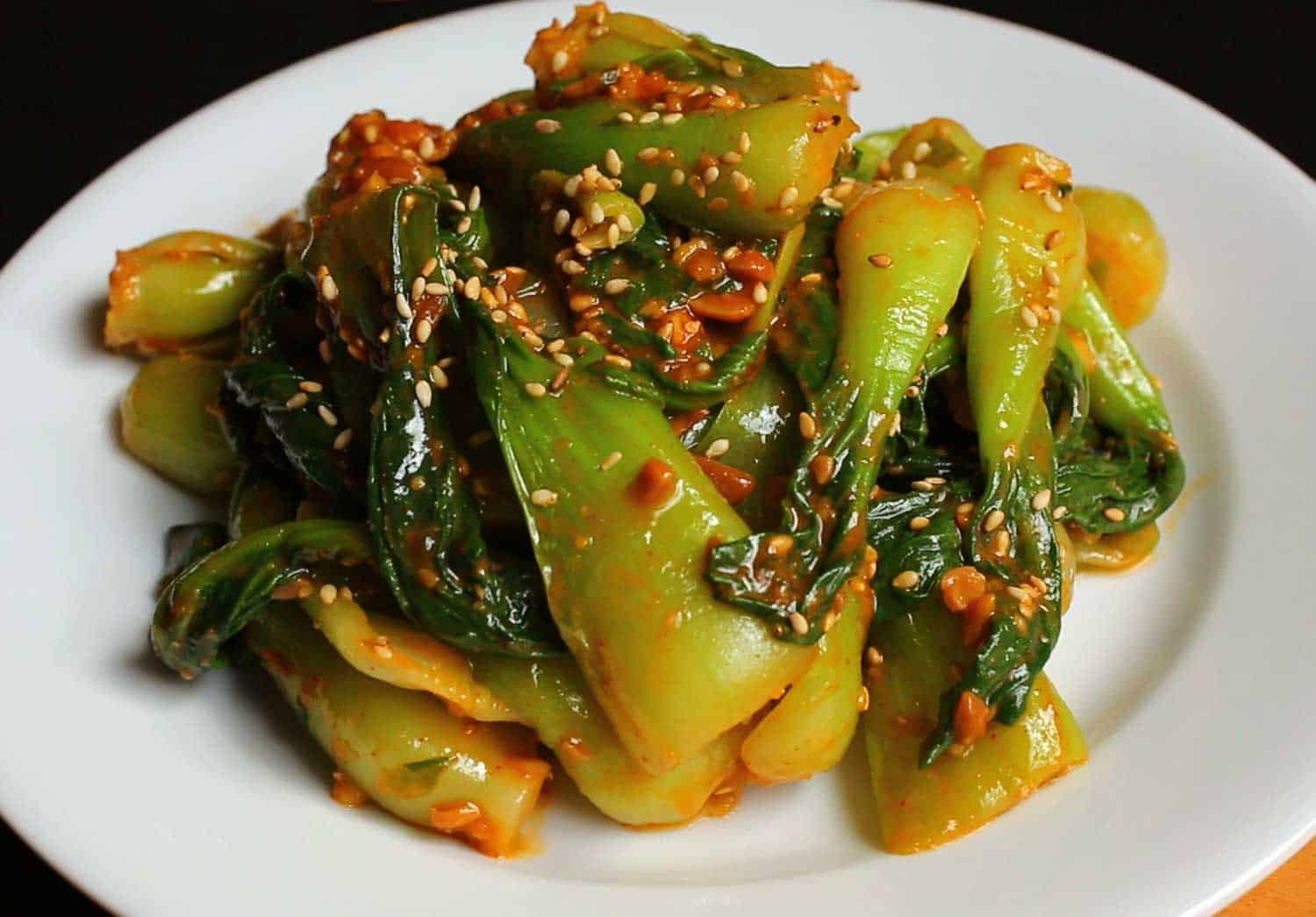
Bok choy is a type of Chinese cabbage, often blanched and seasoned. The Koreans combine the mild and slightly crunchy vegetable with spice in this dish to create a clean, but strong flavor.
깻잎장아찌 — Kkaennip Jangajji
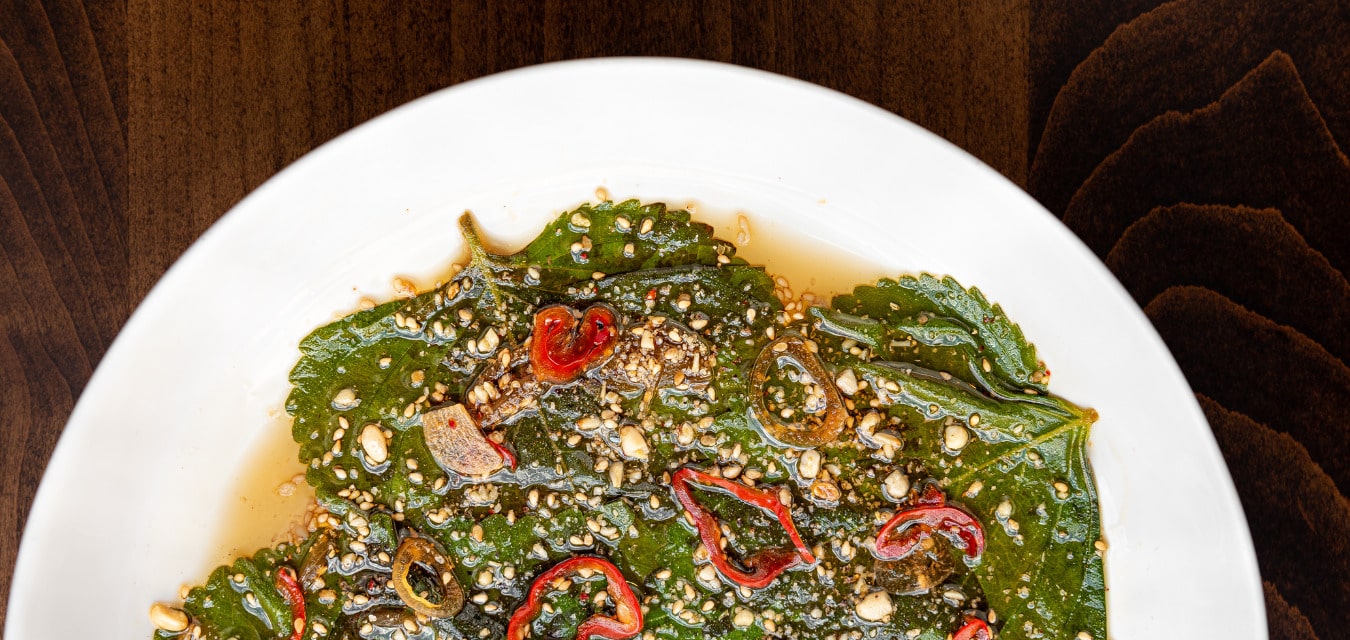
This is a pickled perilla leaf dish, marinated in soy sauce, garlic and sesame oil. It has a distinctive, aromatic flavor. It may be considered weird by some people, but, after all, lettuce is leaves, too, right?
콩장 — Kongjang
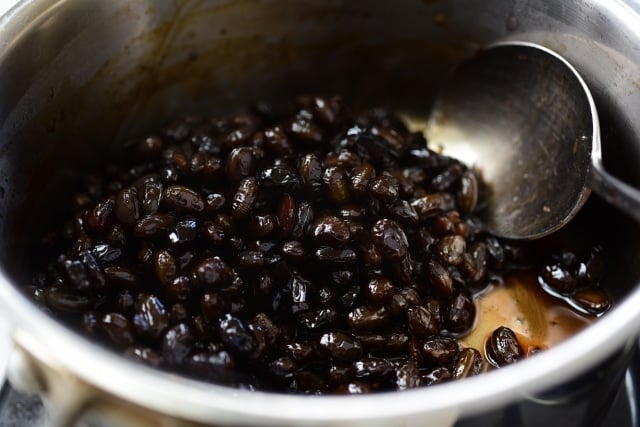
This sweet soybean side dish is made by simmering soybeans in a sauce made of soy sauce, sugar and garlic until the sauce thickens. It’s super filling and I always crave it when I’m not in Korea.
Feeling sufficiently nourished? Good!
Now you can take what you’ve learned and head out to a Korean market to test out what you’ve learned. You could also try to use a Korean recipe book to cook up some of these delicious vegetable-based dishes.
You may soon be cooking up some exquisite and healthy meals, all while relishing in your newfound knowledge.
More Korean Food Lessons
https://www.fluentu.com/blog/korean/fruits-in-korean/
95 Korean Vocabulary Words About Food and Cuisine | FluentU Korean Blog
Korean food vocabulary is a necessary part of the language. Click here to learn over 95 Korean words for food (and types of food), like vegetables, fruit, meats, common…
How to Order Food in Korean | FluentU Korean Blog
Wondering how to order food in Korean? Click here to learn how to navigate any Korean menu and restaurant, with all the phrases you need to order delicious dishes and…
https://www.fluentu.com/blog/korean/bbq-in-korean/
Download: This blog post is available as a convenient and portable PDF that you can take anywhere. Click here to get a copy. (Download)
And One More Thing...
If you enjoyed this post, you're already halfway to having the time of your life learning Korean with FluentU!
FluentU makes it possible to learn with K-pop videos, funny commercials, entertaining web series and more. Just a quick look will give you an idea of the variety of FluentU videos on offer:

FluentU really takes the grunt work out of learning languages, leaving you with nothing but engaging, effective and efficient learning. It's already hand-picked the best videos for you (which are organized by level and topic), so all you have to do is simply choose any video that strikes your fancy to get started.
Each word in the interactive captions comes with a definition, audio, image, example sentences and more.

Access a complete interactive transcript of every video under the Dialogue tab, and easily review words and phrases from the video under Vocab.

You can use FluentU’s unique Quiz Mode to learn the vocabulary and phrases from the video through fun questions.

FluentU keeps track of what you're learning, and tells you exactly when it's time for review, giving you a 100% personalized experience.
Review sessions use video context to help embed the words in your memory.
Start using the FluentU website on your computer or tablet or, better yet, download the FluentU app from the iTunes or Google Play store. Click here to take advantage of our current sale! (Expires at the end of this month.)








